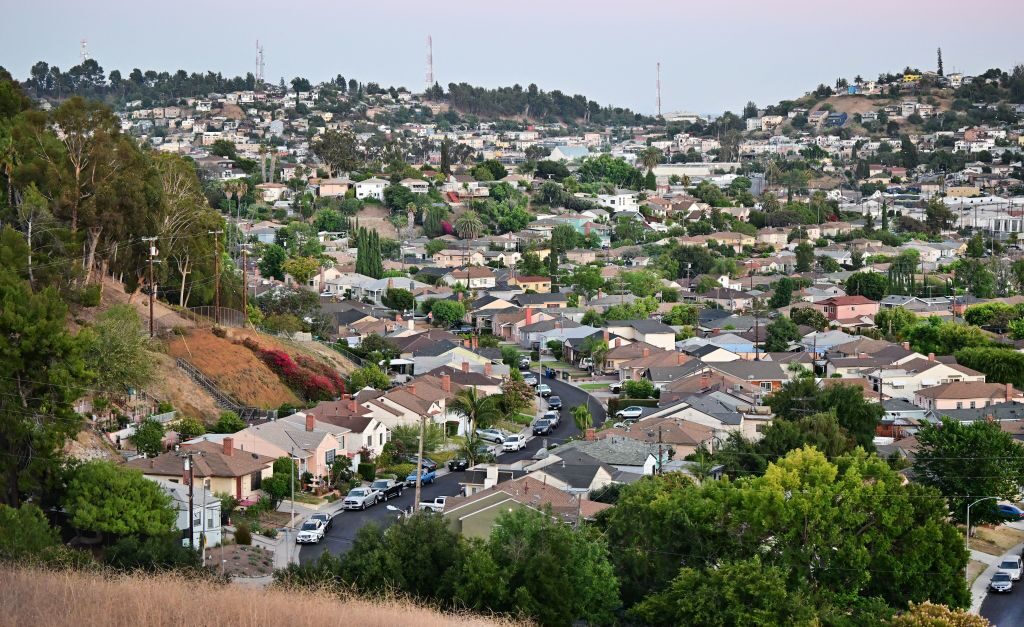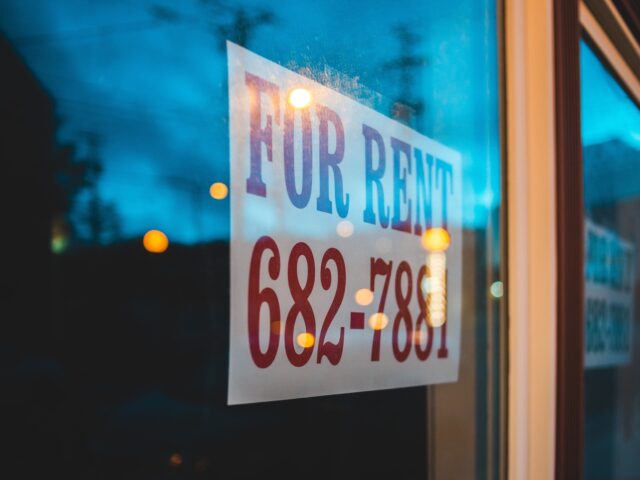Rents are rising because real estate companies are trying to please investors, says a Washington Post report that ignores the economic impact of President Joe Biden’s open borders policy.
The January 2 article focused on rising rents at apartments owned by Starwood Capital Group:
At Starwood’s Estates at Wellington Green in Palm Beach County, Fla., the company raised some rents by as much as 52 percent in 2022; at the Griffin Apartments in Scottsdale, Ariz., it increased them by 35 percent over the same period. At the Cove at Boynton Beach in Florida, it boosted rents on some units by as much as 93 percent in 2022.
…
Edgar Enrique, a pool cleaner from Guatemala who shares with his wife a one-bedroom at Starwood’s Reserve at Ashley Lake, said his rent jumped from $1,600 to $2,000. “For me, it’s not good,” Enrique said. “Why does it cost $400 more now?”
The rents are rising fast because investment executives are pushing to maximize their companies’ profits, the Post reported:
Some families said they were forced into difficult downsizings: Couples with children moved from two-bedroom to one-bedroom apartments even though, as one father said, “we’re tripping over each other.” Another family with three children had a two-bedroom at the Reserve at Ashley Lake. A few months ago, they got a notice that the rent would be rising from $1,600 to $2,000 per month, they said. They moved in with a family member. “We’re trying to save to get out of the cycle,” said the father, an immigrant from Haiti who sells life insurance.
The article downplayed the impact of Biden’s border policy and instead sought to focus all the blame on real-estate companies.
Since January 2021, Biden’s migration has added at least 4 million southern migrants to the United States population, not counting at least two million legal immigrants and visa workers. Assuming six people per apartment, that’s an extra demand for roughly 700,000 apartments in two years when only 800,000 new apartments were completed.
A real estate analysis shows the average rent in Manhattan has risen to $5,058 a month — the highest in history and up 29 percent from last year. https://t.co/aXZn1j0aEl
— Breitbart News (@BreitbartNews) July 17, 2022
Housing industry groups recognize — but downplay — the link between migration and rents.
“Rising rents are largely a byproduct of limited supply and high demand across the rental market,” said a July 2022 op-ed in the Washington Post by Robert Pinnegar, the president and CEO of the National Apartment Association in Arlington, Va.
An August 22 report by the apartment association lamented the slowdown of migration by President Donald Trump:
Immigration was already on the decline prior to the pandemic, noticeably tapering off in 2017. By 2019, immigration was nearly half the level of 2016 when it was over 1 million persons. The pandemic further crushed that figure, and in 2021, just 245,000 immigrants entered the U.S. Although the new administration has put several policies in place to improve immigration, it has been slow to return …
…
In the upside scenario, … immigration rates increase to recent highs, or about 1.2 million per year. This would provide both a higher level of minorities and younger people to the population base. In this scenario … the strong population growth leads to demand for 4.8 million units, or about 344,000 per year.
“I think this is the strongest real estate market I’ve seen in 30 years, 35 years,” Starwood founder Barry Sternlicht said in early 2022.
“We’re in a position now where occupancy is extremely strong and we are pushing rents,” a Starwood executive told a real-estate event, the Post reported.
Starwood rejected the Post‘s investor-focused blame, saying in a statement that: “We would not have been able to grow and maintain our portfolio at this size if we acted differently than any other landlord in this space.”

A view of houses in Los Angeles, California, on July 5, 2022. While two years of a booming U.S. housing market brought wealth to many, a shortage of housing is making home ownership unaffordable for millions of Americans with prices up more than 30% over the past few years and interest rates rising. (FREDERIC J. BROWN/AFP via Getty Images)
Academic research says immigration drives up rents — and also spikes housing prices in nearby locations as Americans flee from the civic impact of the new migrants.
“Using data that span from 2002–2012, we find, as have others, that immigration inflows are associated with rising rents and prices,” according to a March 2017 study of almost 300 “Metropolitan Statistical Areas (MSA), titled “Immigration and housing: A spatial econometric analysis.” The summary reported:
An increase in the number of immigrants equal to 1 percent of an MSA’s total population was linked with a 0.8 percent increase in rents and a 0.8 percent increase in home prices.
This same increase in immigrants was associated with a 1.6 percent rise in rents and a 9.6 percent rise in home prices in surrounding MSAs.
As immigrants move into an MSA, natives tend to move to surrounding MSAs, indicating that the spillover effects may be driven by native-population movements.
Immigrants now comprise roughly 14 percent — or one in seven — of all residents in the United States. That inflow has helped to spike rents and housing costs in California and other coastal states, especially when politicians and builders jointly roll back suburban zoning rules.
“Rents are simply about supply and demand,” said Andrew Good, a director at NumbersUSA. He added:
Not only is it not a secret, but industry reports say the truth out loud: It is beyond dispute that today’s demand is driven by our loose borders … Rent-raising companies are just following the market that Congress created. It will continue until voters put their foot down.
The combination of rising housing costs and decades of flatlined wages is also pushing many people to crowd into overcrowded housing. The New York Times reported in August 2020 about poor migrants trying to live near their service-sector jobs in California’s Silicon Valley during the coronavirus crash:
There were 12 people in three bedrooms, with a bathroom whose door frequently required a knock and a kitchen where dinnertime shifts extended from 5 p.m. well into the evening.
Karla Lorenzo, a Guatemalan immigrant who cleaned houses in San Francisco and Silicon Valley, lived in the big room along the driveway. Big is a relative term when a room has five people in it. She and her partner, Abel, slept in a queen-size bed along the wall. There was a crib for the baby at the foot, with the older children’s bunk bed next to that. The other housemates had similar layouts.
The rising rents and shrinking salaries are also helping to spike the number of homeless Americans.
Since 1990, the federal policy of Extraction Migration is pulling in more migrant renters, workers, and consumers, and has repeatedly been defended by the Washington Post, which is owned by Jeff Bezos, founder of the Amazon retail empire.
This open-borders policy reverses the low-migration, high-wage policies set by President Donald Trump — and the reversal helped cause a massive run-up in stock prices when Biden was elected.
For example, Mid-America Apartment Communities Inc. was worth $134 per share in January 2021 when Biden was inaugurated. It spiked to $229 per share 12 months later, before falling to $156 in January 2022 amid rising interest rates. But the company’s January 2021 to January 2022 rise-and-fall still left it up by 16 percent amid two years of high migration.
Similarly, Starwood’s stock value doubled from October 2020 to June 2021 — but then dropped by 27 percent in January 2022 amid higher interest rates. That rise and fall back to January 2021 levels matched other apartment investors, such as Avalon Bay, and Equity Residential.
“Increased immigration will be key to sustaining apartment demand in these areas over the coming decades,” said the report by the apartment association.

COMMENTS
Please let us know if you're having issues with commenting.